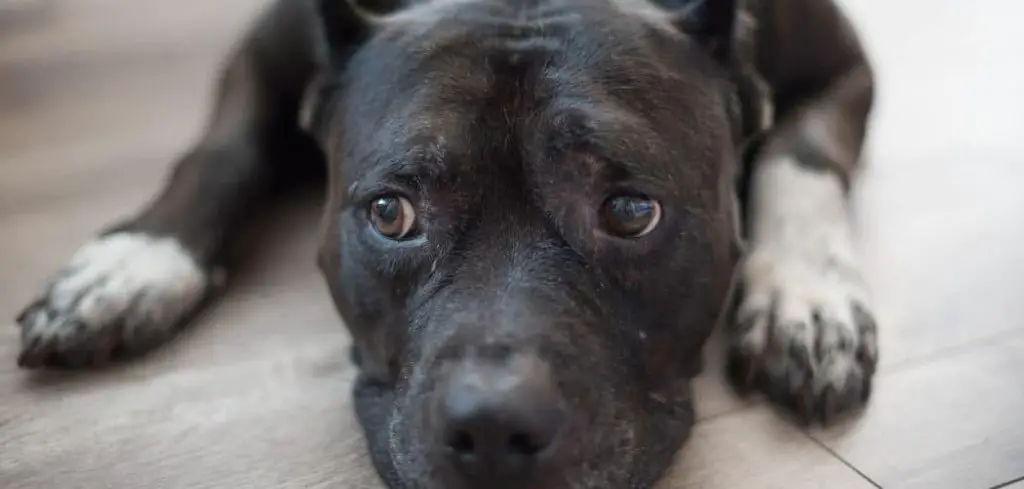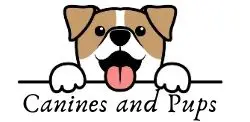If your dog has diarrhea and bloat at the same time, it can be alarming—and for good reason.
Dog diarrhea and bloat are two serious symptoms that can indicate underlying digestive distress or life-threatening medical conditions.
We outline the causes of dog diarrhea and bloat, what symptoms to watch for, and when it’s time to seek immediate veterinary help.
Table of Contents
Why Dog Diarrhea and Bloat Happens
Dog diarrhea and bloat can occur together as a result of serious gastrointestinal issues and should never be ignored. Bloat, also known as Gastric Dilatation-Volvulus (GDV), is a life-threatening condition where the stomach fills with gas and may twist, cutting off blood flow.
While bloat doesn’t directly cause diarrhea, both symptoms may appear simultaneously due to severe digestive upset, rapid food consumption, stress, or an underlying medical problem.
Diarrhea may occur before, during, or after bloat as the body attempts to expel irritants or due to pressure on the intestines.
If your dog shows signs of both diarrhea and bloat—such as a swollen abdomen, restlessness, drooling, retching without vomiting, or rapid breathing—seek emergency veterinary care immediately, as bloat progresses quickly and can be fatal without prompt treatment.

Causes of Dog Diarrhea and Bloat
1. Gastric Dilatation-Volvulus (GDV)
GDV is one of the most severe causes of dog bloat and is often fatal if not treated quickly.
The condition causes the stomach to twist, cutting off blood flow and trapping gas and contents inside.
It often leads to bloated belly and dog diarrhea due to the severe stress it puts on the digestive system.
Large and deep-chested breeds like Great Danes, Boxers, and German Shepherds are more prone to GDV.
Feeding your dog one large meal per day, eating too quickly, or exercising immediately after eating can increase the risk.
2. Dietary Indiscretion
Dogs are curious by nature and often eat things they shouldn’t—spoiled food, garbage, non-food objects.
Ingesting these can lead to dog diarrhea and gas, followed by painful bloating.
When a dog consumes something that irritates the digestive system or ferments in the stomach, it can result in excessive gas production, diarrhea, and abdominal discomfort.
Related: Dog Diarrhea but Acting Normal and Eating (Explained)
3. Food Allergies or Intolerances
Sudden changes in diet or introducing new foods without transition can upset a dog’s stomach.
Food allergies may cause chronic diarrhea in dogs, while certain ingredients like grains, dairy, or high-fat content can contribute to bloating and gas.
Feeding your dog foods high in fermentable carbohydrates (beans, peas, soy) may result in increased gas and watery stools, especially if their digestive system struggles to process it.
4. Intestinal Parasites
Parasites like roundworms, hookworms, and giardia can cause severe gastrointestinal upset, resulting in dog diarrhea and abdominal distention.
Parasites disrupt the normal functioning of the intestines and can lead to a bloated appearance, especially in puppies.
Dogs with parasitic infections may also experience vomiting, weight loss, and poor coat condition.
5. Bacterial or Viral Infections
Infections such as parvovirus, salmonella, or E. coli are common culprits of dog diarrhea and can sometimes lead to bloat, especially in young or immunocompromised dogs.
Parvovirus, for example, is a severe and contagious viral disease that causes bloody diarrhea, vomiting, lethargy, and abdominal swelling due to fluid buildup. Prompt veterinary treatment is essential.
6. Stress and Anxiety
Stress impacts dogs just as it does humans.
Travel, boarding, loud noises, or changes in routine can lead to stress-induced dog diarrhea.
In some dogs, anxiety may also result in excessive air swallowing (aerophagia), contributing to dog bloat and gas.
Stress also affects how the digestive tract functions, slowing digestion and increasing the likelihood of gastrointestinal upset.
Related: Dog Diarrhea and Vomiting But Acting Normal (Explained)
7. Swallowed Air from Fast Eating
Dogs that eat rapidly, especially from elevated bowls or using poor posture, tend to swallow a lot of air.
This increases the risk of bloat and gas accumulation in the stomach.
When paired with a sudden diet change or rich food, it can also lead to diarrhea in dogs.
Using a slow-feeder bowl and feeding smaller meals more frequently can help reduce this risk.
8. Pancreatitis
Pancreatitis, or inflammation of the pancreas, can cause symptoms like vomiting, dog diarrhea, abdominal pain, and bloating.
It often occurs after a dog consumes a high-fat meal or table scraps.
This condition disrupts digestion and leads to poor absorption of nutrients, resulting in gastrointestinal upset and visible swelling.
Related: Dog diarrhea and shaking head (Explained)
What To Do If Your Dog Has Diarrhea and Bloat
If your dog shows signs of both diarrhea and bloat, the most important step is to seek immediate veterinary care, especially if you notice symptoms of GDV.
However, here’s what you can do while arranging a vet visit:
Do not give human medications: These can worsen your dog’s condition or cause toxicity.
Keep your dog calm and still: Activity can exacerbate the condition if bloat is present.
Note the symptoms and timing: This information can help your vet determine the underlying cause.
Avoid food and water until your dog has been evaluated, especially if they are trying to vomit or seem distressed.
When to Call the Vet Immediately
You should contact your veterinarian without delay if your dog experiences any of the following along with dog diarrhea and bloat:
Unproductive retching or attempts to vomit
Distended, hard abdomen
Weakness or collapse
Excessive panting or difficulty breathing
Bloody or black stool
High fever or severe lethargy
Bloat can kill within hours if not treated, so early intervention is critical.
How to Prevent Dog Diarrhea and Bloat
Prevention is always better than cure. To reduce the risk of your dog developing diarrhea and bloat:
Feed multiple small meals a day rather than one large one.
Use slow-feeder bowls to prevent fast eating and air swallowing.
Avoid strenuous exercise immediately before and after meals.
Gradually change diets over a 7–10 day period to prevent gastrointestinal upset.
Keep trash and hazardous foods out of reach to avoid dietary indiscretion.
Regular deworming and routine vet check-ups help control parasites and infections.
Minimize stress by keeping your dog’s environment calm and consistent.
Key Takeaway: Dog Diarrhea and Bloat
While dog diarrhea alone can often be managed at home if mild, its presence alongside bloat should never be ignored.
These symptoms can indicate life-threatening conditions such as gastric dilatation-volvulus, intestinal infections, or organ inflammation. Time is critical.
If you observe signs of both diarrhea and bloat in your dog, monitor closely and contact your vet immediately. Even if the symptoms seem to improve, underlying issues may persist.
Ensuring proper diet, routine, and medical care is the best defense in protecting your dog from these serious conditions.
Would you like a downloadable infographic summarizing the causes and signs of dog diarrhea and bloat?
